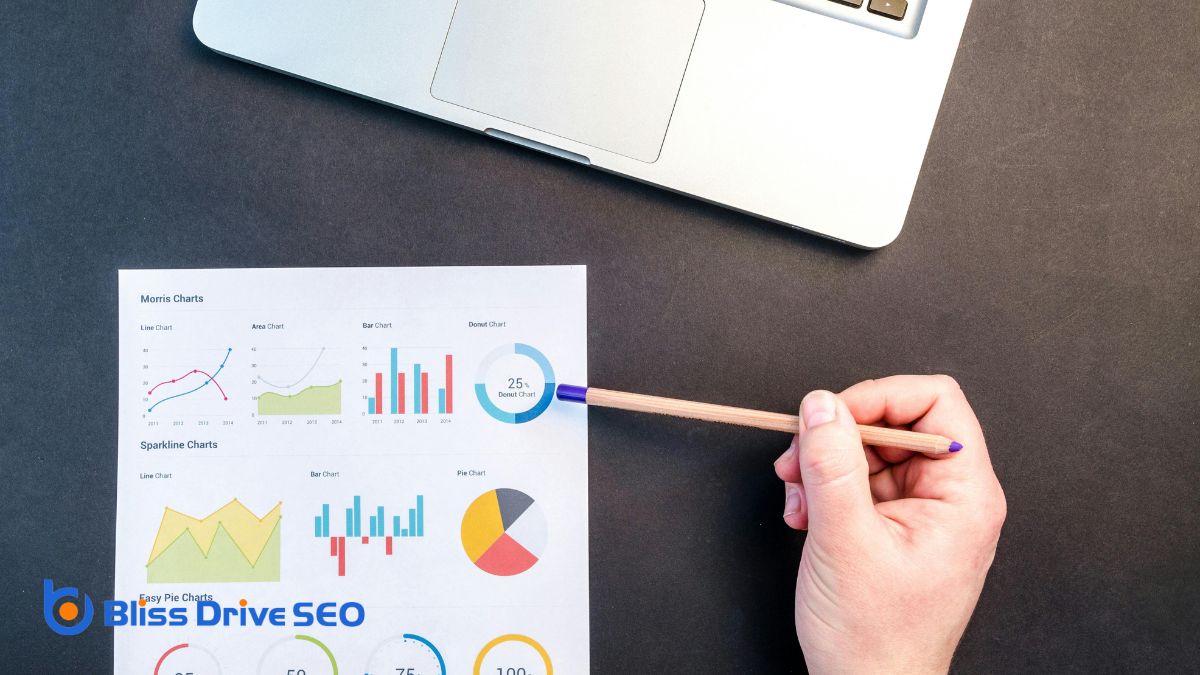Digital Marketing Services
Learn More About Us

Starting SEO as a beginner might feel overwhelming, but it doesn't have to be. The first step is grasping the basics, like understanding what search engine optimization actually means and why it's important for your website. You'll want to focus on creating content that's both high-quality and relevant to your audience. But how do you find the right keywordsWords or phrases that users type into search engines to find information. that your potential visitors are searching for? And once you have them, what do you do next? There's a strategic path to follow, and it begins with knowing where to look and what questions to ask.
Understanding SEO basics is fundamental if you're starting your journey into search engine optimization. SEO, or Search Engine Optimization, involves optimizing your website to improve its visibility on search engines like Google. By grasping the basics, you'll enhance your site's chances of appearing higher in search results, attracting more visitors.
First, focus on creating high-quality, relevant content. Search engines prioritize content that provides value to users. Make sure your content is original and informative and answers the questions your audience might have. This approach not only boosts rankingsThe position at which a website appears in the SERP. but also builds trust with your visitors.
Next, ensure your website's structure is user-friendly. A well-organized site with clear navigation helps search engines index your pages efficiently. Pay attention to elements like headers, URLs, and meta tags. They should be descriptive and reflective of the content on the page.
Additionally, understand the significance of mobile-friendliness. With more users accessing the internet via smartphones, having a responsive designA web design approach that makes web pages render well on a variety of devices and window or screen ... is optimal. Search engines favor sites that perform well on mobile devices.
Lastly, page speedThe time it takes for a webpage to load, affecting user experience and conversion rates. matters. Fast-loading pages improve user experience and search rankings. Regularly check your site's performance and make necessary adjustments to maintain peak speed.

Starting keyword research is an essential step in your SEO strategy. You need to identify the words and phrases your potential audience uses when searching for information, products, or services. This helps you align your content with what people are actually looking for, increasing your chances of attracting the right visitors to your site.
Begin by brainstorming a list of topics relevant to your business. Think about the questions your audience might ask and the problems they're trying to solve. Use tools like Google Keyword Planner, Ubersuggest, or SEMrush to expand your list and discover additional keyword ideas. These tools provide insights into search volume, competition, and even related keywords.
Focus on finding a mix of short-tail and long-tail keywordsLonger, more specific keyword phrases that are less competitive and often more targeted.. Short-tail keywords are usually one or two words with high search volume but more competition.
Long-tail keywords are longer phrases with lower competition and often higher conversionThe completion of a desired action by a referred user, such as making a purchase or filling out a fo... rates. They help you target specific niches and capture more qualified traffic.
Crafting quality content is crucial for an effective SEO strategy, as it directly impacts how search engines and users perceive your website. When you focus on creating valuable, engaging content, you're not just writing for algorithms but for real people. This means understanding your audience's needs and interests. Start by addressing their questions and providing insightful, relevant information that adds value to their experience.
Use a clear and engaging writing style. Avoid jargon unless it's necessary and your audience is familiar with it. Instead, aim for simplicity and clarity to guarantee your message is easily understood. Break up long blocks of text with headings, bullet points, and images to make your content more digestible.
Consistency is key. Regularly updating your website with fresh content keeps your audience engaged and encourages search engines to index your pages more frequently. Include a variety of content types like blog posts, videos, and infographicsVisual representations of information, data, or knowledge intended to present complex information qu... to cater to different preferences.
Lastly, verify your content is original and free from plagiarism, as search engines prioritize unique content. By focusing on quality, you'll build trust with your audience and improve your site's SEO performance.
Optimizing on-page elements is vital for improving your site's search ranking and user experience. Start by crafting effective meta tags that clearly describe your content to search engines and users.
Next, use structured header tags to organize your content and enhance internal linkingLinks that connect different pages on the same website. to guide visitors smoothly through your site.
Meta tags, although small in size, play a significant role in boosting your website's visibility and performance. They're snippets of text that describe a webpage's content and appear in the code to help search engines understand what your page is about.
To craft effective meta tags, focus on two primary types: meta titles and meta descriptions.
Start with the meta title. It should be concise, typically around 50-60 characters, and include the main keyword you're targeting. Verify it accurately reflects the page content and entices users to click. Think of it as your page's headline in search results—make it compelling.
Next, tackle the meta descriptionA brief summary of a web page’s content, shown in the SERP.. Although not a direct ranking factor, it influences click-through rates. Aim for 150-160 characters, summarizing the page content and including keywords naturally. Provide a clear reason why someone should visit your page.

When it comes to optimizing on-page elements, structuring header tags is important for both search engines and users. Header tags, like H1, H2, H3, and so on, help organize your content and make it more readable.
For search engines, they provide a clear hierarchy of your page content, signaling what's most important. For users, well-structured headers make it easier to scan and find the information they're looking for.
Start with the H1 tagThe main heading tag in HTML, important for SEO and indicating the primary topic of a page., which should include your main keyword and clearly represent the primary topic or purpose of the page. You should only have one H1 tag per page.
Next, use H2 tags for main sections or subtopics, breaking down your content logically. If necessary, use H3 tags for subsections within those H2 sections. This hierarchy helps both users and search engines understand your content's structure.
An important aspect of on-page optimizationImproving individual webpages to rank higher and earn more relevant traffic in search engines. is improving your internal linking strategy, as it can greatly enhance both user experience and search engine crawlingThe process by which search engines discover new and updated web pages to index.. When you connect pages within your site, you help visitors discover related content, keeping them engaged longer. This also aids search engines in understanding your site's structure, leading to better indexingThe process of adding web pages into a search engine's database. and potentially higher rankings.
Start by identifying key pages on your site that you'd like to boost, such as cornerstone content or high-converting pages. Guarantee these pages have plenty of internal links pointing to them from other relevant pages. Use descriptive anchor textThe clickable text in a hyperlink, important for SEO as it provides context for the linked page. that naturally fits within the content, providing search engines with context about the linked page.
It's essential to maintain a logical hierarchy in your linking. Your homepage should link to main category pages, which then direct to subcategories or individual content pages. This structure helps search engines grasp the significance of each page on your site.
Regularly audit your internal links to confirm they're not broken or leading to outdated content. Use tools like Google Search ConsoleA tool by Google that helps monitor and maintain your site's presence in search results. to find crawl errors and fix them promptly. By improving your internal linking, you create a more cohesive and accessible website, benefiting both users and search engines.
To enhance your site's user experience, start by simplifying navigation so visitors can easily find what they need.
Next, focus on improving page load speed since faster pages keep users engaged.
Browsing a website should feel intuitive and effortless, guaranteeing users find what they need without frustration. Simplifying site navigation is key to enhancing user experience, which ultimately boosts your SEO efforts. Start by organizing your website's content into clear, logical categories. This helps users understand your site's structure and locate the information they're after quickly.
Use descriptive and concise labels for your navigation menu. Avoid jargon or overly creative terms that might confuse visitors. Stick to familiar words like "Home," "About," and "Contact" to make navigation straightforward.
If your site has multiple pages, consider using dropdown menus to keep the main navigation bar clean and uncluttered.
Incorporate a search bar, especially if you have a content-rich site. A search function is a lifeline for users who know exactly what they're looking for. Guarantee the search bar is easily visible and functional.

When it comes to enhancing user experience, improving page load speed is vital. You mightn't realize it, but your website's speed can make or break a visitor's experience. Slow-loading pages can frustrate users and drive them away, increasing your bounce rateThe percentage of visitors who leave a website after viewing only one page. and harming your SEO efforts. Google also considers page speed when ranking sites, so it's essential to get it right.
Start by analyzing your current speed using tools like Google PageSpeed Insights or GTmetrix. These tools will help you identify issues that are slowing your site down. Once you've pinpointed the problems, focus on optimizing images. Large images can be a major culprit, so compress them without sacrificing quality. You can use tools like TinyPNG for this purpose.
Consider minimizing your use of heavy scripts and plugins, as they can bloat your site. Also, enable browser caching, which allows users to store parts of your site in their browsers, reducing load times on subsequent visits.
In today's digital age, with more people accessing the internet on their phones than ever before, optimizing your website for mobile experience is essential. A mobile-friendly site guarantees that visitors have a seamless experience, no matter what device they're using. Start by using a responsive design that automatically adjusts to different screen sizes. This makes navigation easy and keeps users engaged.
Next, simplify your site's layout. Mobile screens are smaller, so you should prioritize important information and minimize clutter. Use clear, readable fonts, and make sure buttons are large enough to tap easily. This enhances user experience and keeps them on your site longer.
Don't forget to test your site on various devices and browsers. What looks great on one phone mightn't work well on another. Tools like Google's Mobile-Friendly TestA tool that evaluates how well a website performs on mobile devices. can help you identify and fix issues.
Also, consider implementing Accelerated Mobile Pages (AMP) to speed up load times.
Lastly, focus on mobile SEOOptimization techniques to ensure a website performs well on mobile devices. by optimizing titles, meta descriptions, and images. A mobile-optimized site not only improves user experience but also boosts your search engine rankings. By prioritizing mobile optimizationDesigning and formatting web content to ensure it performs well on mobile devices., you're setting your site up for success in the ever-growing mobile market.
Building backlinksLinks from other websites pointing to your website, crucial for SEO. is an essential element of any successful SEO strategy, as Google's algorithms often consider them a vote of confidence for your website. When other sites link to yours, it signals to search engines that your content is valuable and trustworthy.
To start, focus on quality over quantity. Reputable backlinks from well-regarded sites in your nicheA specific segment of the market targeted by affiliates to promote products or services. are far more beneficial than numerous links from low-quality websites.
You can begin by creating high-quality, shareable content that naturally attracts backlinks. Think about guest bloggingWriting and publishing articles on other websites to reach a new audience. on relevant sites, offering your expertise in exchange for a link back to your site. Make sure the content you create for these opportunities is excellent, as this will encourage more sites to link to you.
Another approach is to reach out to website owners or bloggers directly. If you've mentioned them or their product in your content, let them know. They might appreciate the mention and link back to your site. Additionally, check for broken links on related sites and suggest your content as a replacement. This helps both parties and can leadA potential customer referred by an affiliate who has shown interest in the product or service but h... to valuable backlinks.

Harnessing the power of social media can greatly enhance your SEO efforts. When you share content on platforms like FacebookA social networking site where users can post comments, share photographs, and links to news or othe..., InstagramA photo and video-sharing social networking service owned by Facebook., or TwitterA microblogging and social networking service where users post and interact with messages known as "..., you increase its visibility and drive more traffic to your site. This traffic can boost your search rankings, as search engines often notice when a website gets a lot of attention.
Make sure your social media profiles are complete and align with your brand. Consistent brandingThe process of creating a unique name, design, and image for a product or service in the consumer's ... helps reinforce your online presence and makes it easier for potential customers to find you.
Engage actively with your audience by responding to comments and messages. Interaction builds relationships and encourages users to share your content further, expanding your reach. Use relevant keywords in your posts, but make sure they fit naturally. This practice can improve your visibility in search results both within social media platforms and on search engines.
Don't forget to include links to your website in your social media bios and posts. These links not only drive direct traffic but also contribute to your backlink profile, which is essential for SEO.
As you explore further into your SEO journey, monitoring your performance becomes essential for success. You need to know what's working and what's not to make informed decisions. Start by using tools like Google AnalyticsThe systematic computational analysis of data or statistics to gain insights and support decision-ma... and Google Search Console. They'll provide valuable insights into your website's traffic, keyword rankings, and user behavior. Pay attention to metrics such as organic trafficVisitors who come to a website through unpaid search engine results., bounce rate, and conversion rates. These numbers help you understand how well your SEO efforts are paying off.
Next, set specific goals to track. Maybe you want to increase your page views or improve your ranking for certain keywords. By having clear objectives, you'll know exactly what to focus on. Regularly check your performance metricsKey indicators used to measure the effectiveness of affiliate marketing efforts, such as clicks, con... to see if you're meeting these targets.
Don't forget to monitor your competitors too. Knowing their strengths and weaknesses can give you a competitive edge.
Keep an eye on your website's technical aspects as well, like page speed and mobile-friendliness. These factors can affect your site's ranking and user experience. Consistently reviewing and analyzing your SEO performance will guide you toward making necessary adjustments, ensuring your strategy stays effective and aligned with your goals.
Adapting to algorithm changes is essential, and understanding search intentThe purpose behind a user’s search query. is your first step in staying ahead.
Keep an eye on ranking fluctuations to spot any trends or shifts in how your content performs.
Regularly updating your content guarantees it remains relevant and aligned with current search algorithms, helping you maintain or improve your rankings.
Search intent is a crucial concept to grasp when diving into SEO, especially since search algorithms are continually evolving. Understanding search intent means knowing why users type certain queries into search engines. Are they looking to purchase something, find information, or navigate to a specific site? Grasping this can transform your SEO strategy.
Start by analyzing the keywords you're targeting. Ask yourself what a user truly wants when they search those terms. There are generally three types of search intents: informational (seeking knowledge), navigational (finding specific sites), and transactional (aiming to make a purchase).
Align your content to meet these intents. If users want information, provide in-depth guides or articles. If they're ready to make a purchase, ensure your product pages are optimized and clear.
You can also use tools like Google Analytics to glean insights into user behavior on your site. Look at which pages users spend the most time on and which have high bounce rates. This data helps refine your understanding of what users want.
Once you've grasped search intent, it's essential to keep an eye on ranking fluctuations to ensure your SEO strategy remains effective. Search engine algorithms change frequently, impacting how your website ranks. By monitoring these fluctuations, you can adapt your strategy to maintain or improve your position on search engine results pages.
Start by using tools like Google Search Console or third-party ranking trackers to regularly check your website's performance. These tools provide insights into keyword rankings, traffic patterns, and potential issues affecting your visibility. If you notice significant drops or sudden spikes, investigate the cause. It could be due to algorithm updatesChanges made by search engines to their ranking algorithms., competitor activity, or changes in user behavior.
Reacting promptly to these changes is vital. When search engines update their algorithms, they might prioritize different ranking factors. Stay informed by following SEO news and updates from reliable sources. This awareness helps you adjust your content and technical SEOOptimizing the server and website structure to improve search engine crawling and indexing. practices accordingly.
Also, analyze your competitors. If they're outranking you, look at what they're doing differently. Adapting to new strategies can help you regain your competitive edge. Remember, SEO is a dynamic field—staying vigilant and responsive keeps you ahead in the game.

Keeping your website's content updated is crucial for staying relevant in the ever-evolving landscape of search engine algorithms. Search engines, like Google, frequently alter their algorithms to enhance user experience. These changes mean that content that once ranked well mightn't maintain its position if left stagnant. By regularly updating your content, you're demonstrating to search engines that your website is active and providing current information, which can positively impact your ranking.
Start by reviewing your existing content. Check for outdated information, broken links, or any areas that could be expanded with new insights. When you update, aim for quality over quantity. Ensure your content is thorough, relevant, and adds value to the reader. This doesn't mean completely rewriting everything; sometimes, small tweaks, like updating statistics or adding new examples, are enough.
Additionally, stay informed about algorithm changes by following SEO news and updates. This helps you understand what search engines prioritize, allowing you to adjust your content strategyA plan for creating, publishing, and managing content to meet business goals. accordingly.
A successful long-term SEO strategy requires a mix of patience, planning, and persistence. To build a strong foundation, you need to focus on several key components that will cover all aspects and guarantee your efforts yield results over time. Start by understanding your audience and their needs. This will guide your content creation and help you target the right keywords.
Here's how you can develop a sustainable SEO strategy:
Starting SEO as a beginner might seem challenging, but by focusing on the basics, you're setting yourself up for success. Begin by understanding the core principles, like keyword research and crafting quality content. Don't forget to optimize your on-page elements and enhance user experience. Utilize social media to boost visibility and keep an eye on your SEO performance. As algorithms change, adapt and refine your strategy. With patience and persistence, you'll see your efforts pay off.
